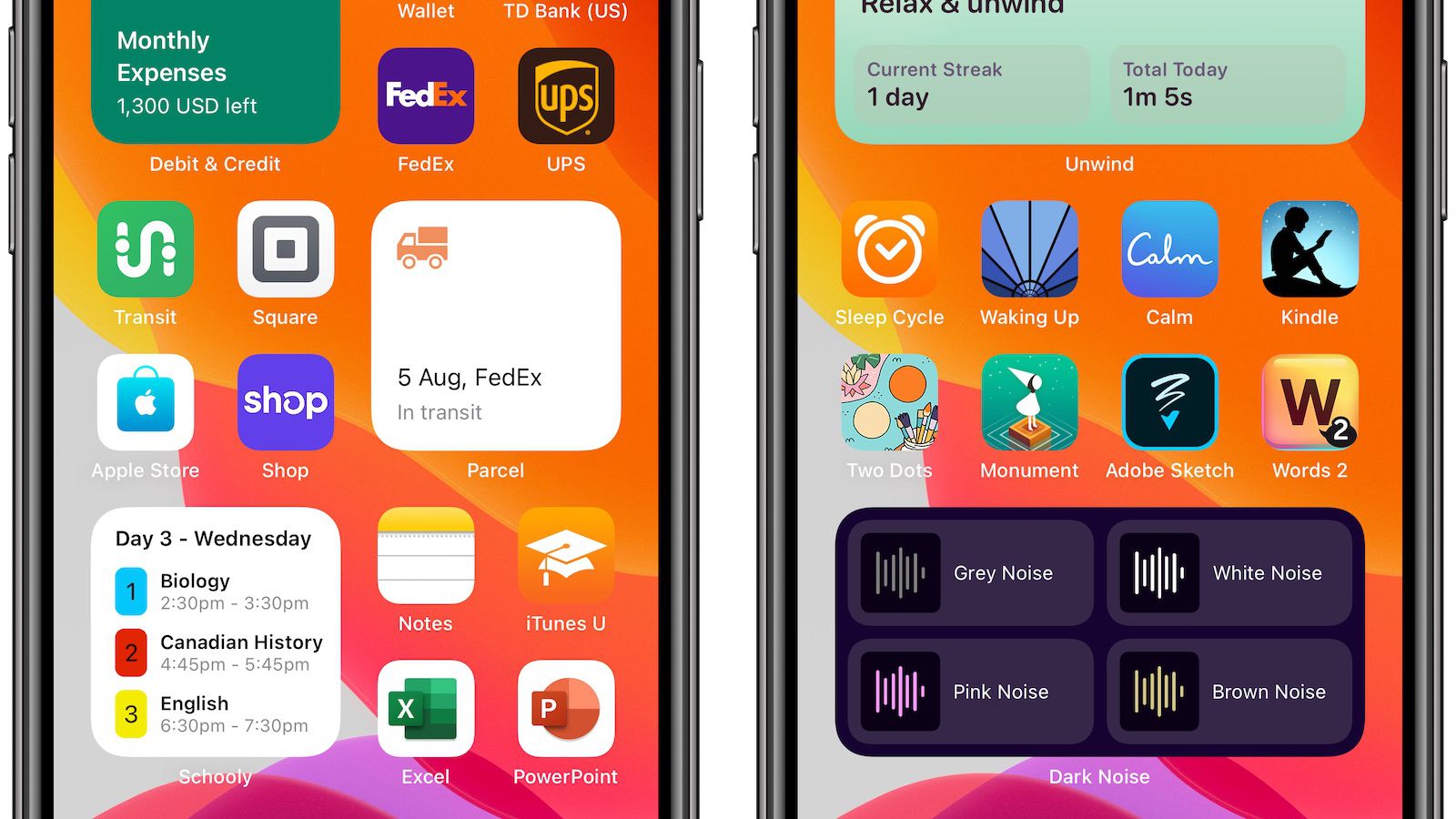The benefits of widgets in iOS 14 for app developers
With the arrival of iOS 14, Apple has (finally) integrated widgets on iPhone and iPad. Present for many years on Android, these small graphical elements can be added to the user’s home screen. We will, through this article, present them to you.
Widgets made by Apple
Before the arrival of iOS 14, widgets were already present on iPhone but in a rather limited form. They were only accessible from the widget drawer and all had very similar designs.
With iOS 14, the whole operation of the iPhone home screen has been redesigned and new widgets are an integral part of this redesign. They can now be placed wherever the user wants, even in the middle of app icons. Of course, they also remain accessible in the widget drawer.
The new widgets also come in three different formats: small, medium and large. Each increase in size allows more information to be displayed. Because yes, these widgets are there only for information: impossible to integrate buttons (for a music player for example).
Along with the introduction of widgets, Apple also introduced a new element for the Home screen: the smart battery. This element can be summarized as a widget with several widgets. The user can scroll through the widgets in the stack at will, or the stack can display them automatically. The stack uses artificial intelligence to do this, which will predict, depending on the time of day and the user’s habits, the most relevant widget to display.
Widgets on the technical side
There are two types of widgets: static widgets and dynamic widgets. The former are the most basic, they simply display the information sent to them from the application. Dynamic widgets, on the other hand, can be adapted to the user’s context. They can, for example, use the user’s geolocation to provide him with information as close as possible to his needs. Regardless of the type of widget set up, it is possible to update the information it contains every X minutes thanks to an event system.
Widgets, while devoid of buttons, can still be interactive. For example, the Mail application widget, which displays a list of the most recent unread mails, can open the application directly to the mail selected by the user by touching the widget.
For the realization, the iOS 14 widgets are based only on SwiftUI for the graphic side. This SDK, presented a year and a half ago, has matured and its exclusive use for widgets demonstrates Apple’s desire to impose it within its ecosystem. Another graphical aspect, the widgets must all support the dark mode introduced with iOS 13.
Widgets: the added value for your application
As stated above, widgets are centered around information. They must allow the user to access information that is crucial to him, simply and quickly.
As Montreal developers we can then imagine use cases depending on the nature of the application: a delivery time of the delivery person for a meal delivery application, the departure time of the next bus depending on where we are is found, the latest news from an information application.
The possibilities are numerous, and adding widgets within your application will improve the experience for your users.

by
Guarana
Filed under App Funding
Tagged
